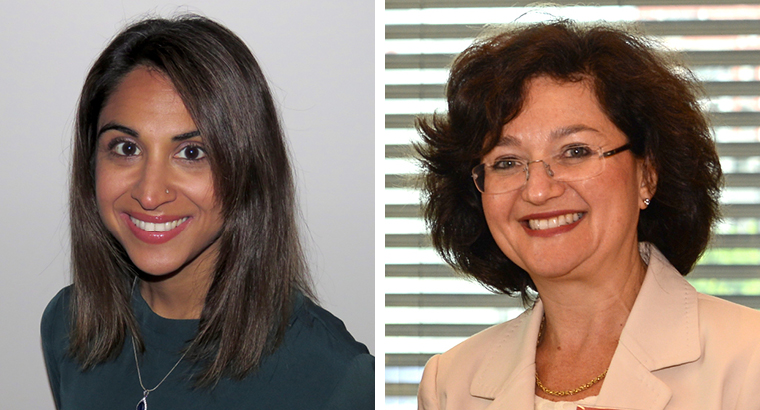Feature
Triple test and breast awareness: Best practice for breast cancer diagnosis
Cancer Australia’s updated resource for GPs is designed to help give women their best chance against breast cancer.
 Cancer Australia advises women that being ‘breast aware’ and knowing what is right when showering, dressing and looking in the mirror helps keep alert to potential breast changes and symptoms.
Cancer Australia advises women that being ‘breast aware’ and knowing what is right when showering, dressing and looking in the mirror helps keep alert to potential breast changes and symptoms.
Catching breast cancer as early as possible is vital to providing the best patient outcomes.
‘Diagnosis of breast cancer at an early stage increases chances of successful treatment and improves survival, and in Australia we have amongst the best survival statistics in the world,’ Dr Vivienne Milch, Director of Cancer Care at Cancer Australia, told newsGP.
‘In 2010–14, which is our latest data, women diagnosed with breast cancer had over a 91% chance of surviving for five years.’
Cancer Australia’s updated resource, Investigation of a new breast symptom: A guide for general practitioners (the guide), provides a comprehensive and up-to-date resource for GPs and their patients on how to best assess a new breast symptom in order to give women the greatest possible chance against breast cancer.
According to Dr Alia Kaderbhai, GP and coordinator of the RACGP Specific Interests Breast Medicine subgroup, GPs are often at the forefront of investigating and diagnosing breast cancer, so knowing the information contained in the updated guide is key to better outcomes.
‘GPs are often the first port of call when somebody notices a new breast symptom, including new lumps. So we’re really instrumental in doing a proper breast examination, but then also knowing the next steps to take,’ she told newsGP.
Cancer Australia’s guide provides useful and practical information on those next steps, outlining the systematic approach known as the triple test.
‘The triple test uses a sequence of three steps to investigate new breast symptoms,’ Dr Milch explained.
‘First of all, medical history and clinical breast examination. Second is breast imaging, via mammography and/or ultrasound. And third, a non-excisional biopsy, which might be a core biopsy and/or a fine-needle aspiration.
‘A triple test is more accurate at detecting breast cancer than any of those individual tests alone and, when performed appropriately, it will detect over 99.6% of breast cancers.
‘Conversely, a triple test negative on all of those components provides good evidence that cancer is unlikely – a less than 1% chance.’

L–R: Dr Alia Kaderbhai, GP and coordinator of RACGP Specific Interests Breast Medicine subgroup, said women do not need to be an expert to be breast aware; Dr Vivienne Milch, Director of Cancer Care at Cancer Australia, said early diagnosis of breast cancer increases chances of successful treatment and survival.
Although huge strides have been made in breast cancer diagnosis and treatment over the past several decades, it remains the most commonly diagnosed cancer among women – even in women younger than those targeted for the national breast screening program.
‘It’s estimated that breast cancer is the most commonly diagnosed cancer for women aged 20–39 years,’ Dr Milch said.
Dr Kaderbhai said that breast cancer prevalence is still very common – and appears to be rising.
‘I think most people would be surprised to know that every day, two women under the age of 40 are diagnosed with breast cancer,’ she said. ‘It certainly is becoming more prevalent; the number of new cases being diagnosed is definitely on the rise.
‘I think it’s partly to do with other risk factors that are more prevalent in society now. For example, we know that alcohol and alcohol consumption has increased, particularly amongst women, as has obesity around the world, but particularly in Australia.’
However, there are also positive reasons – and positive outcomes – for a growing number of cases.
‘It’s also partly to do with better screening, better diagnosis and better assessment [for breast cancer] as well, and the aim is to diagnose cases early so we can optimise outcomes in women,’ Dr Kaderbhai said.
Dr Kaderbhai believes the Cancer Australia guide will be helpful for GPs in giving clear guidance on best practice regarding diagnosis and referral.
‘[It] can really clarify some confusion about what symptoms warrant investigation and emphasise the fact that it doesn’t matter how young the patient is, if there are worrisome or new changes, they should be investigated and we should be adhering to the triple assessment so we can accurately diagnose or exclude disease,’ she said.
In train with its updated guide for GPs, Cancer Australia is also highlighting a change in advice to patients from regular self-monitoring and examination for breast symptoms to being ‘breast aware’, which is explained in its short video, ‘Find it early and survive’.
‘The video outlines that there’s no need for women to use a special technique to check their breasts,’ Dr Milch said. ‘Knowing what is a normal look and feel for them through their everyday activities, such as showering, dressing, looking in the mirror, will help to identify any changes that are new.’
Dr Kaderbhai believes this updated advice will help make it easier for women to recognise symptoms that may warrant a discussion with their GP.
‘What we’re really trying to highlight is that everyone is different and what is normal for one person might not be normal for somebody else,’ she said.
‘The importance of the message of breast awareness is that you don’t need to be an expert to be breast aware. You just need to know what is normal for you, and if you notice a change, then you should go see your GP.’
breast cancer Breast Cancer Awareness month triple test
newsGP weekly poll
Which of the following areas are you more likely to discuss during a routine consultation?